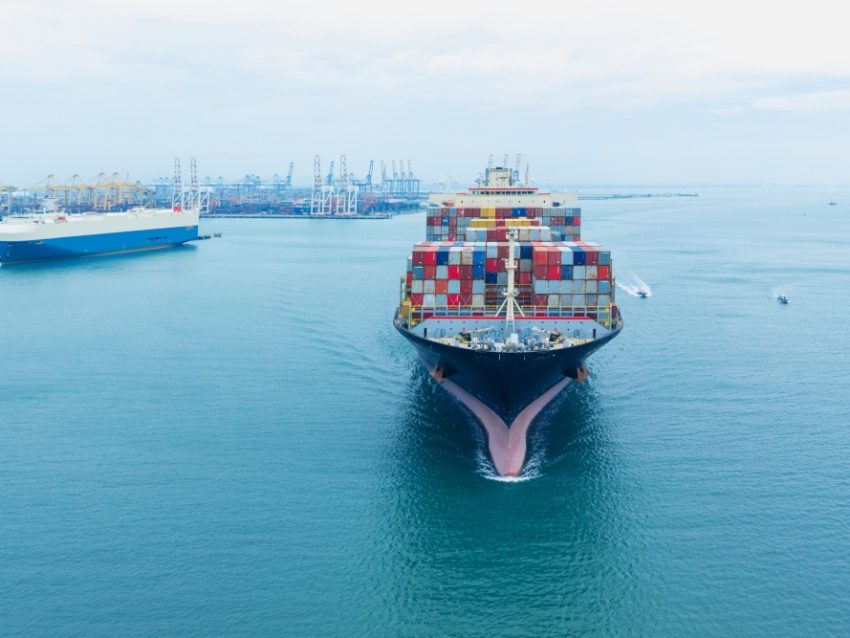
Sea freight is one of the most popular means of transporting goods over long distances. What are the advantages and disadvantages of sea transport? Check if your company should use this form of transport.
What are the advantages of sea freight?
Maritime transport has its own unique advantages that make it attractive for international trade and logistics. Sea freight has many advantages that make it widely used in international trade and logistics. It is mainly used to transport goods over long distances, most often intercontinental. Its unquestionable advantage is the unlimited volume of transport, both in terms of the quantity and size of the transported loads. Ships for the carriage of goods by sea can accommodate huge quantities of goods, which in turn translates into efficiency and economies of scale. Thanks to this maritime transport is particularly advantageous for the transport of bulk cargo, raw materials, fuels, construction materials and other large quantities of goods. In case of means of sea transport Containers are the basic loading unit. It is thanks to them that sea freight ensures efficient handling and transport as well as safety of transported goods.
To the advantages of sea transport also global accessibility, thanks to ports located all over the world. Thanks to the extensive port network and sea routes, goods can be transported over long distances, also intercontinental. Ensuring global connectivity is crucial for international trade and the supply of goods to various markets. Sea transport in Poland serve the largest Baltic ports. Polish entrepreneurs also use sea freight carried out by German ports.
Undoubtedly advantage of sea transport are low transport costs. Compared to other means of transport transportation of goods by sea is often the most economical. unit costs transportation of goods by ship are usually lower than for air, road or rail transport. Large container ships that transport large quantities of goods at a time allow for economies of scale and lower transport costs. It is worth remembering, however, that the price of transporting a unit container is not always cheaper than other means of transport - rail may be a growing competition for sea freight. An example is the express freight trains running on the New Silk Road between China and Europe. It happened that transporting a container by rail was cheaper than that transportation of goods by ship. It should also be remembered that prices for transport by these means of transport are subject to constant fluctuations and it is worth checking the price offer for rail and sea freight each time before ordering transport. Interestingly, the railway is also very competitive when it comes to groupage transport. If you are importing goods that will fill only part of the container, consider using the rail freight offer, which will often be cheaper than groupage maritime transport.
Disadvantages of sea transport
Despite its popularity and many advantages, sea freight also has its disadvantages. The most important of them is the longest delivery time among all means of transport operating over long distances. It can serve as an example transportation of goods by sea from China to Poland and Europe. The global transit time of cargo transported on such a route by a container ship is from 2 to 3 months. In the case of rail, this time is reduced to less than a month (24-28 days), and in the case of airplanes to a maximum of two weeks. What are these differences? Weather and environmental conditions play an important role in the delivery of container ships - e.g. sea currents or storms, storms or thick fogs. Huge amount of cargo transported vessels for the carriage of goods by sea may affect the smoothness of service in reloading ports, where it is common to roll containers. As a result, the delivery of goods can take much longer, which can be an obstacle in the case of urgent or time-consuming deliveries. The inability to predict weather events or organizational problems in transhipment ports makes maintaining the continuity of the supply chain much more difficult and burdened with greater risk.
Maritime transport it also carries the risk of loss or damage to the goods. Although it is usually safe, there is some risk of loss or damage to the goods. This applies in particular to perishable, delicate or flammable loads. In addition, marine accidents or ship breakdowns can lead to potential loss or damage to cargo. What's more, due to the long delivery time (2-3 months), it cannot be used to transport goods with a short shelf life (e.g. food).
It's worth considering carefully advantages and disadvantages of sea transport in the context of specific needs and logistical requirements. For some transportations and industries, benefits sea transport outweigh its shortcomings, while in other cases alternative modes of transport, such as express freight trains, may provide a better and more efficient service.
